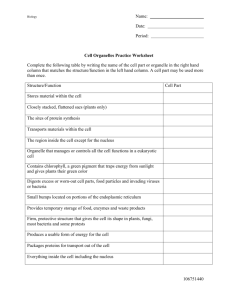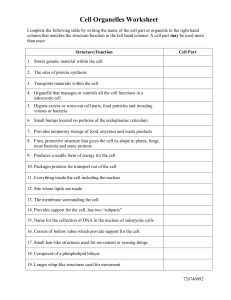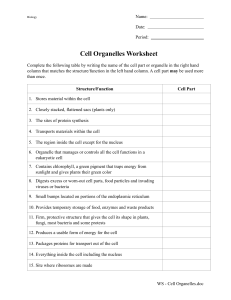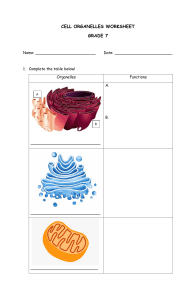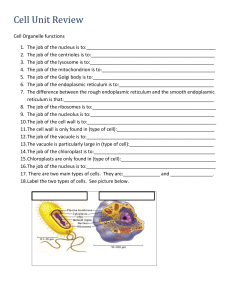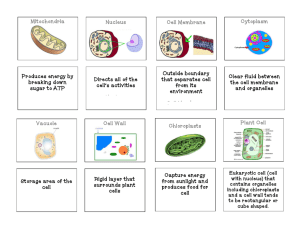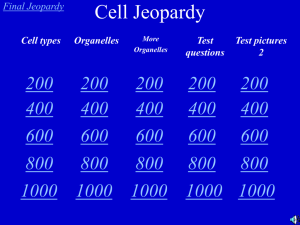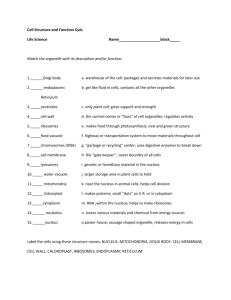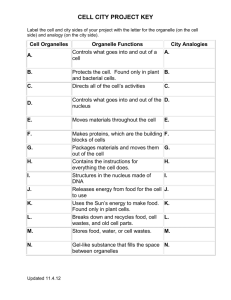Cell Organelles Student Handout
advertisement
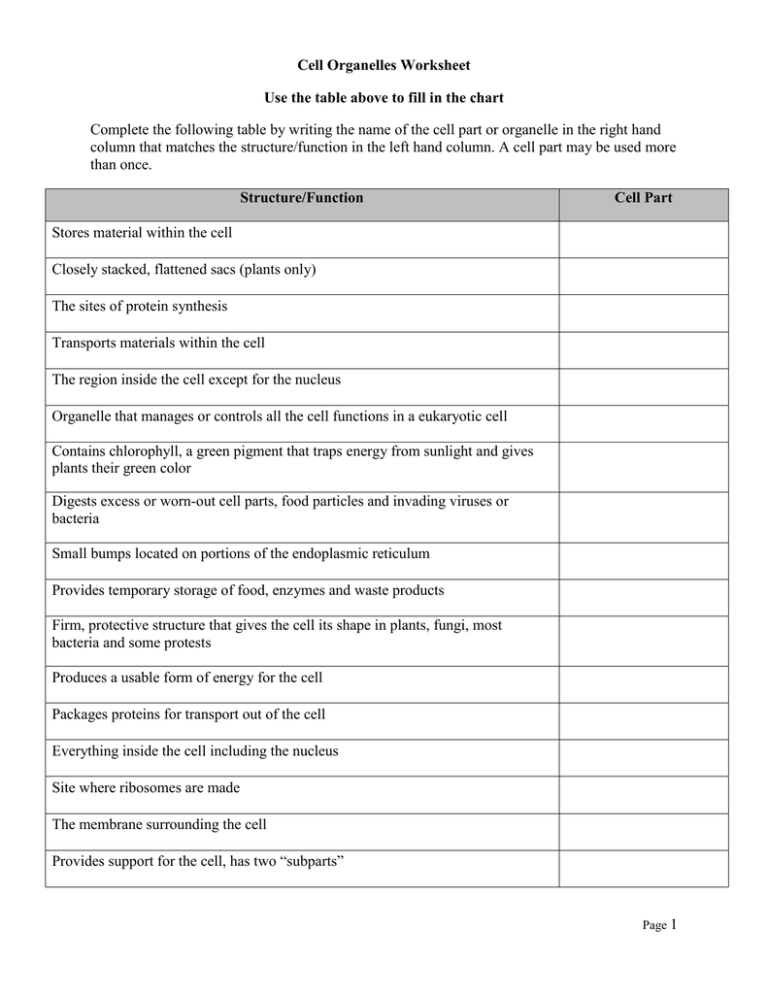
Cell Organelles Worksheet Use the table above to fill in the chart Complete the following table by writing the name of the cell part or organelle in the right hand column that matches the structure/function in the left hand column. A cell part may be used more than once. Structure/Function Cell Part Stores material within the cell Closely stacked, flattened sacs (plants only) The sites of protein synthesis Transports materials within the cell The region inside the cell except for the nucleus Organelle that manages or controls all the cell functions in a eukaryotic cell Contains chlorophyll, a green pigment that traps energy from sunlight and gives plants their green color Digests excess or worn-out cell parts, food particles and invading viruses or bacteria Small bumps located on portions of the endoplasmic reticulum Provides temporary storage of food, enzymes and waste products Firm, protective structure that gives the cell its shape in plants, fungi, most bacteria and some protests Produces a usable form of energy for the cell Packages proteins for transport out of the cell Everything inside the cell including the nucleus Site where ribosomes are made The membrane surrounding the cell Provides support for the cell, has two “subparts” Page 1 Name for the collection of DNA in the nucleus of eukaryotic cells Consist of hollow tubes which provide support for the cell Small hair-like structures used for movement or sensing things Composed of a phospholipid bilayer Longer whip-like structures used for movement Put a check in the appropriate column(s) to indicate whether the following organelles are found in plant cells, animal cells or both. Organelle Cell Wall Plant Cells Animal Cells Vesicle Chloroplast Chromatin Cytoplasm Cytoskeleton Endoplasmic reticulum Golgi apparatus Lysosome Mitochondria Nucleolus Nucleus Plasma membrane Central vacuole Ribosome Vacuole Page 2
